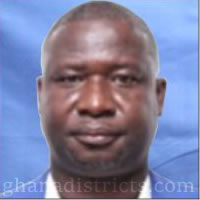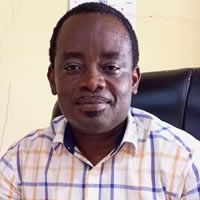Population Size, Growth Rate and Sex Ratio
The total population of the District, according to the 2000 Population and Housing Census was 129,375, with an annual growth rate of about 3 %. The Census revealed that the District had a sex ratio of 101, indicating the presence of more males than females. The projected population of the district for 2008 is 179,753.
Population Density
The district has a population density of 439 persons per sq. km. The district is third in the region, after Kumasi Metropolis and Kwabre District, which have 5,319 and 659 persons per sq. km respectively. Abuakwa Area Council has the highest population of 34,449, representing 26.6 % of total population of the district. Afari has the lowest population of 8,929 (6.9%)
Rural- Urban Split
The district is predominantly urban, 64.0 % live in the urban/peri-urban areas of the District. Only 36.0% of the population lives in the rural areas. Major settlements in the District include Abuakwa, Nkawie, Toase, Asuofua, Barekese, Atwima Koforidua, Asenemaso Akropong, etc. The proximity of the district to the Kumasi Metropolis greatly accounts for this situation. Kumasi is already choked so people are now moving toward these peri-urban towns.
It is therefore important for the district to put in place strategies that will help the proper management of the urban situation and also provide the needed infrastructural and services for the rural settlements. The average household size in the district is 5.7persons. This is higher than the regional average of 5.3 persons. Nkawie- Toase Area Council has the highest household size of 6.4. Adankwame Area Council has the lowest household size of 5.2 Heads of household are mainly male (67.8%). Where a female is head of household; it may be a single person or single parent household.
The age structure of the population in the District is skewed towards the youth. The highest proportions are in the Age groups 0-4 years (15.5%) and 5-9 years (15.8%). Cumulatively, 43.2% of the population in the District is below 15 years. This, coupled with a 6.2% population above 64 years means a high potential demand for social services and facilities. The employable age constitute 50. 65%. The employable youth (15-29) constitute 24.1% of the total population. There are slightly more males (51.0%) than females (49.0%). This translates into a sex ratio of 101 males to 100 females.
Religious Affiliation
Christianity is the dominant religion in the district (75.7%), Islam (13.2%), Traditional Religion (1.3%), Other Religion (0.9%) and No Religion (9.0%)
Dependency Ratio
The dependent population is the proportion of people catered for by those working or in the employable ages (15-64 years). This constitutes 48.7% of the total population of the district. The dependency ratio for Atwima Nwabiagya Municipal is 97. This implies, 0.97 dependent per employable person. This is higher than the regional ratio of 92.0
The real dependency burden may be higher since the employable ages include a greater proportion of the unemployed and those in school/acquiring skills. Measures are required to increase employment and income levels so as to be able to feed, support and cater for the dependent population.
Spatial Analysis
This section gives the main spatial organization issues in the district. It discusses the location and distribution of services in the district.
Only eight settlements in the district have populations above 5000. About 40% of the total population of the district is found in these eight settlements. Fifteen settlements have populations between 2000 and 5000. The target population for the provision of boreholes is located in about 88 settlements; their total population together represents about 28% of the total population of the District. There are 20 settlements with populations less than 75. Their total population represents 0.34% of the district population.
Nature and Distribution of Settlements
There are 126 settlements in the district. The urban settlements in the district are Abuakwa, Nkawie (the district capital), Toase, Asuofua, Barekese, Atwima Koforidua and Asenemaso.
Nature of physical Development
Physical development in the District can be grouped into two – private and Public. Individuals undertake the private development for their exclusive use (building for residential, commercial civic user etc) Public development on the other hand can be classified, as constructional works, be it building, road, bridges, culvert etc. for the general good of the citizenry. The central and local government normally undertakes these.
Private and Public physical development undertaken in the district are governed by two major developmental tools at the disposal. These are Development planning and Development Management (Control) all working through the Statutory Planning Committee (SPC). The Building Regulation LI 1630 is the legislation that regulates the issuance of Building Permit and monitoring of physical construction.
The Statutory Planning Committee meeting is the forum where development applications of prospective developers are looked at technically and approved for the issuance of Development and Building Permits. The issuance of the Development and Building permits enables commencement of development works of whatever the prospective developer applied for.
It is however sad to relate that the private developers to a large extent do comply with the above as regards the sending of their applications with the accompanying drawings but the same cannot be said of public projects which are normally undertaken without re-course to the Statutory planning Committee’s approval, thus creating in most cases, site problems at the implementation stage.
Settlement Planning
Settlements Planning, though a District-Wide activity it can be said to be concentrated along three (3 main road corridors, namely the Kumasi-Barekese, Abuakwa – Sunyani and Abuakwa – Bibiani.) where the direction of growth is concentrated. Some of the settlements along these corridors have approved and operational planning schemes/layouts. The aforementioned schemes/layouts are in sectors, as they do not cover the total land area of the various settlements.
Notable settlements on the Kumasi-Barekese corridor with schemes/layout are Asuafua, Old Mmcestia, Adankwame, Barekese and Amoamen. On the Abuakwa – Bibiani corridor we have Sepaase, Maakro, Mim, Bodwesango, and composite scheme for Toase, Nkawie Panin and Nkawie Kuma are some of the settlement with approved schemes/layout.
The Abuakwa – Sunyani corridor has Abuakwa, Asonomaso, Abesewa, mahyia, Akropong and Sokwai. The Town & Country Planning Department and settlement Planning Consultants together have twenty-seven planning schemes/layout prepared and approved by the Statutory Planning Committee. The aforementioned schemes/layouts are tools available to the Assembly through the SPC to ensure orderly physical development in the District.
It must be stated that most urbanized settlements in the District have schemes/layout as guide whilst the reverse in the situation of rural communities. The skewness of scheme/layout preparation is also in favour of communities closer to Kumasi, which again ironically happens to be the urbanized settlements.
The reason for this phenomen is not far fetched as the settlements in close proximity to Kumasi have assumed a ( peri-urban ) status and land values here are higher than that in the rural communities. This high values thus serve as a motivating factor for landowners willing to commit funds for scheme / layout preparation where initial cost is normally outside the reach of most landowners in the rural communities. It becomes an issue of why to commit so much to a venture whose anticipated returns in terms of “drink money “ to the landowner cannot even recover initial cost. Challenges or problems of Settlement planning in the District
Date Created : 11/24/2017 4:02:47 AM




